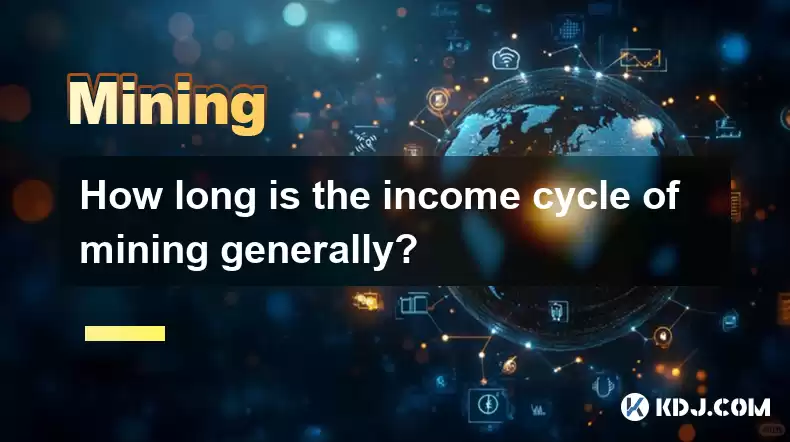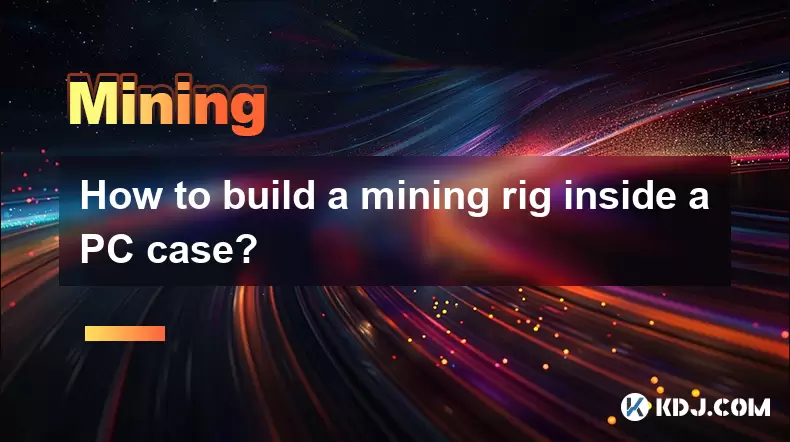-
 Bitcoin
Bitcoin $117500
2.15% -
 Ethereum
Ethereum $3911
6.19% -
 XRP
XRP $3.316
10.79% -
 Tether USDt
Tether USDt $1.000
0.01% -
 BNB
BNB $787.2
2.24% -
 Solana
Solana $175.2
4.15% -
 USDC
USDC $0.9999
0.00% -
 Dogecoin
Dogecoin $0.2225
8.40% -
 TRON
TRON $0.3383
0.28% -
 Cardano
Cardano $0.7868
6.02% -
 Stellar
Stellar $0.4382
9.34% -
 Hyperliquid
Hyperliquid $40.92
7.56% -
 Sui
Sui $3.764
7.63% -
 Chainlink
Chainlink $18.48
10.66% -
 Bitcoin Cash
Bitcoin Cash $582.1
1.88% -
 Hedera
Hedera $0.2601
6.30% -
 Avalanche
Avalanche $23.33
4.94% -
 Ethena USDe
Ethena USDe $1.001
0.02% -
 Litecoin
Litecoin $122.3
2.04% -
 UNUS SED LEO
UNUS SED LEO $8.969
-0.27% -
 Toncoin
Toncoin $3.339
0.86% -
 Shiba Inu
Shiba Inu $0.00001287
4.30% -
 Uniswap
Uniswap $10.43
7.38% -
 Polkadot
Polkadot $3.861
5.08% -
 Dai
Dai $1.000
0.02% -
 Bitget Token
Bitget Token $4.513
3.41% -
 Monero
Monero $267.7
-6.18% -
 Cronos
Cronos $0.1499
4.14% -
 Pepe
Pepe $0.00001110
5.15% -
 Aave
Aave $284.9
8.28%
How long is the income cycle of mining generally?
Cryptocurrency mining income is highly variable, depending on hashrate, difficulty, crypto price, hardware, and operational costs; there's no fixed income cycle.
Mar 06, 2025 at 09:12 am

Key Points:
- The income cycle in cryptocurrency mining isn't fixed and depends heavily on several factors.
- Hashrate, difficulty, and cryptocurrency price are major influencers.
- Mining profitability is dynamic, fluctuating constantly.
- Individual miner experiences vary based on their hardware and operational costs.
- Understanding these factors is crucial for managing mining expectations.
How Long is the Income Cycle of Mining Generally?
The question of how long a mining income cycle lasts is complex. There's no single answer. Unlike a traditional job with a set paycheck schedule, cryptocurrency mining income is irregular and unpredictable. The "cycle" isn't a fixed period like a week or a month, but rather a continuous process of earning rewards that fluctuate based on various factors.
One of the most significant factors influencing the income cycle is the network's hashrate. Hashrate represents the total computing power dedicated to mining a particular cryptocurrency. As more miners join the network, the hashrate increases, making it harder to mine and reducing individual rewards. This increased competition means the time it takes to earn a certain amount of cryptocurrency lengthens.
Mining difficulty also plays a crucial role. The mining difficulty adjusts periodically to maintain a consistent block generation time. If the hashrate increases significantly, the difficulty adjusts upwards, making it harder to solve the complex mathematical problems required for mining and thus affecting the income cycle. A higher difficulty means a longer time to earn rewards.
The price of the cryptocurrency itself is another key determinant. Even if the mining rate remains constant, a drop in the cryptocurrency's price directly impacts the value of the rewards. What might seem like a profitable mining operation at one price could become unprofitable with a price drop, effectively lengthening the time to achieve a desired income level.
The type of cryptocurrency being mined significantly impacts the income cycle. Different cryptocurrencies have different block reward schedules and mining algorithms, leading to varying income patterns. Some cryptocurrencies may offer more frequent, smaller rewards, while others offer less frequent, larger rewards. The choice of cryptocurrency heavily influences the perceived length of the income cycle.
The hardware used in mining significantly influences the income cycle. More powerful and efficient mining rigs can solve more computational problems faster, leading to more frequent rewards and a shorter perceived income cycle. Conversely, less powerful hardware will generate rewards more slowly, extending the income cycle. Energy costs also impact profitability, shortening or lengthening the cycle depending on their efficiency.
Furthermore, the operational costs associated with mining, such as electricity, cooling, and hardware maintenance, play a crucial role. These expenses directly reduce the profitability of mining, effectively lengthening the time required to achieve a target income. Miners must carefully manage these costs to ensure profitability and a reasonable income cycle.
The income cycle is not just about the time it takes to earn a single reward. It's also about the overall profitability of the operation. A miner might receive rewards frequently, but if the costs exceed the value of the rewards, the operation is unsustainable, regardless of the frequency of the income cycle.
Mining pools, where miners combine their computing power to increase their chances of finding blocks, can also affect the income cycle. While pools provide more consistent rewards, the payout schedule within the pool itself can influence the perceived income cycle. The pool's fee structure also plays a part in determining the net income.
The overall length of the income cycle is therefore highly variable and dependent on numerous interacting factors. It's a continuous process of balancing rewards against costs and adapting to the ever-changing cryptocurrency landscape. A miner might experience periods of frequent rewards followed by periods of less frequent rewards, making it difficult to define a typical income cycle length.
Frequently Asked Questions:
Q: Is there a typical timeframe for receiving mining rewards?
A: No, there's no typical timeframe. The time between rewards depends on the cryptocurrency, mining difficulty, your hashing power, and luck. It could range from minutes to hours, or even days.
Q: How can I estimate my mining income?
A: Use online mining calculators that factor in your hardware's hash rate, electricity costs, the cryptocurrency's price, and the current mining difficulty. Remember these are estimates, and actual income will fluctuate.
Q: What happens if the cryptocurrency price drops significantly?
A: If the price drops below your operational costs, mining becomes unprofitable, regardless of the frequency of rewards. You may need to adjust your strategy or halt mining operations.
Q: Can I mine profitably with older hardware?
A: It's becoming increasingly difficult to mine profitably with older hardware due to increased competition and higher difficulty. The profitability heavily depends on electricity costs and the specific cryptocurrency.
Q: What are the risks associated with cryptocurrency mining?
A: Risks include fluctuating cryptocurrency prices, rising electricity costs, hardware failure, and the possibility of the cryptocurrency becoming obsolete or losing value.
Q: How does mining difficulty affect my income?
A: Higher mining difficulty means it takes longer to find a block and receive a reward, thus reducing your income rate. It's a competitive aspect of the mining process.
Q: What are mining pools and how do they impact my income cycle?
A: Mining pools combine the hashing power of multiple miners, increasing the chance of finding blocks and receiving rewards more frequently. However, they typically charge a fee for their services.
Q: Is solo mining still profitable?
A: Solo mining is generally only profitable for those with extremely powerful hardware and very low electricity costs. The probability of finding blocks independently is much lower compared to mining pools.
Disclaimer:info@kdj.com
The information provided is not trading advice. kdj.com does not assume any responsibility for any investments made based on the information provided in this article. Cryptocurrencies are highly volatile and it is highly recommended that you invest with caution after thorough research!
If you believe that the content used on this website infringes your copyright, please contact us immediately (info@kdj.com) and we will delete it promptly.
- SNEK, Cardano, and the Contributor's Conundrum: A Meme Coin's Fight for Recognition
- 2025-08-08 16:30:12
- Toshi Crypto's Wild Ride: Rally, Demand Slump, and What's Next
- 2025-08-08 16:30:12
- Ethereum, Staking Yields, and DeFi Exposure: A New Era for Investors?
- 2025-08-08 15:10:12
- Unilabs Pumps MIA, Binance Coin Bouncing Back, and Ethereum's Bearish Blues
- 2025-08-08 15:10:12
- Ethereum's Wyckoff Markup and Market Rotation: A New Era?
- 2025-08-08 15:30:12
- Ethereum, Vitalik Buterin, and the Overleveraged Game: A Balancing Act
- 2025-08-08 15:30:12
Related knowledge

What is "proof-of-work" and how does it relate to mining?
Aug 07,2025 at 02:03pm
Understanding the Concept of Proof-of-WorkProof-of-work (PoW) is a consensus mechanism used in blockchain networks to validate transactions and secure...

What are the differences between mining on Windows vs. Linux?
Aug 06,2025 at 11:29pm
Overview of Cryptocurrency Mining PlatformsCryptocurrency mining involves using computational power to solve complex cryptographic puzzles and validat...

How to use an old computer for cryptocurrency mining?
Aug 07,2025 at 12:42pm
Understanding the Feasibility of Using an Old Computer for MiningUsing an old computer for cryptocurrency mining may seem outdated, but it is still te...

Can you mine cryptocurrency using solar power?
Aug 07,2025 at 12:00am
Understanding the Basics of Cryptocurrency MiningCryptocurrency mining involves validating transactions on a blockchain network by solving complex cry...

How to build a mining rig inside a PC case?
Aug 06,2025 at 11:01pm
Understanding the Basics of a Mining Rig in a PC CaseBuilding a mining rig inside a PC case involves transforming a standard computer chassis into a d...

What are the best cryptocurrencies to mine with an ASIC?
Aug 08,2025 at 01:22am
Understanding ASIC Mining and Its Role in CryptocurrencyASIC stands for Application-Specific Integrated Circuit, a specialized hardware designed to pe...

What is "proof-of-work" and how does it relate to mining?
Aug 07,2025 at 02:03pm
Understanding the Concept of Proof-of-WorkProof-of-work (PoW) is a consensus mechanism used in blockchain networks to validate transactions and secure...

What are the differences between mining on Windows vs. Linux?
Aug 06,2025 at 11:29pm
Overview of Cryptocurrency Mining PlatformsCryptocurrency mining involves using computational power to solve complex cryptographic puzzles and validat...

How to use an old computer for cryptocurrency mining?
Aug 07,2025 at 12:42pm
Understanding the Feasibility of Using an Old Computer for MiningUsing an old computer for cryptocurrency mining may seem outdated, but it is still te...

Can you mine cryptocurrency using solar power?
Aug 07,2025 at 12:00am
Understanding the Basics of Cryptocurrency MiningCryptocurrency mining involves validating transactions on a blockchain network by solving complex cry...

How to build a mining rig inside a PC case?
Aug 06,2025 at 11:01pm
Understanding the Basics of a Mining Rig in a PC CaseBuilding a mining rig inside a PC case involves transforming a standard computer chassis into a d...

What are the best cryptocurrencies to mine with an ASIC?
Aug 08,2025 at 01:22am
Understanding ASIC Mining and Its Role in CryptocurrencyASIC stands for Application-Specific Integrated Circuit, a specialized hardware designed to pe...
See all articles

























































































